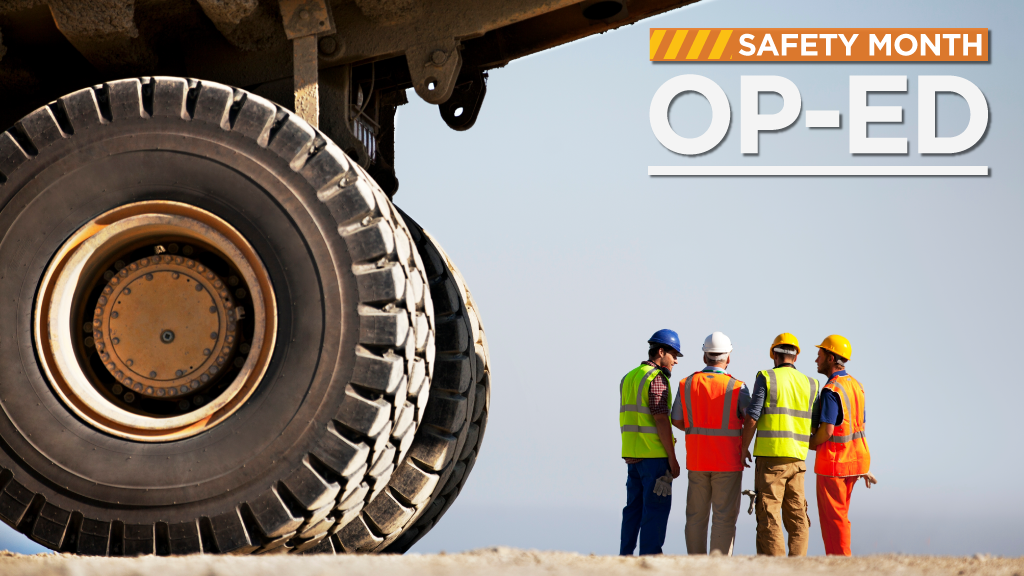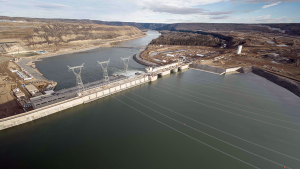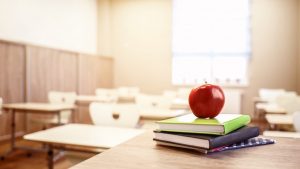Construction Safety Week is an opportune time to reflect on the evolving landscape of B.C.’s construction industry and the importance of prioritizing occupational health and safety (OHS) amidst its remarkable growth.
Over the past decade, the construction industry in B.C. has seen a 40 per cent increase in employers and a 20 per cent rise in full-time employees, a trend that is expected to continue. Alongside this growth, the industry has become more complex, with taller buildings, larger multi-employer projects and a greater variety of equipment on worksites.

Despite these changes, there has been a decline in the time-loss claims rate over the last decade. In 2013, construction had a time-loss claims rate of 3.99 per 100 workers. This improved to 2.98 in 2022. This is a credit to construction employers and their workforce.
However, we cannot be complacent. Serious injuries still account for approximately 15 per cent of injury claims in the construction industry. Construction remains one of the highest risk industries in the province, and recent crane-related incidents have underscored many of the inherent risks involved in construction work.
WorkSafeBC’s focus
WorkSafeBC’s 2024 Construction Planned Inspectional Initiative involves proactive, unannounced inspections and is designed to reduce the construction industry’s serious injury rate and the time-loss claims rate by taking a risk-based approach.
Our focus in 2024 is on struck-by incidents involving mobile equipment and falls from elevation — both major drivers of the serious injury rate. Additionally, we are looking at musculoskeletal injuries (MSIs), as these injuries contribute significantly to the volume of claims, resulting in lost workdays and productivity.
Employers should be prepared for workplace inspections at any time. When a WorkSafeBC officer visits your site, they will focus on the most significant risks and look for proper hazard identification, risk evaluation and control implementation. However, they will also examine the entire worksite to see how well your safety management system is working.
Risk management: The basis of a safe worksite
Effective risk management is critical to a safe construction site. Employers must take a proactive approach to identify potential hazards, assess risks and implement measures to control those risks.
Most importantly, the risk management process should involve your workers at every step as they know the work best and will ensure your OHS program effectively identifies and addresses potential risks. In addition, when workers are involved, they feel valued and empowered, enhancing job satisfaction and productivity.
The role of employers and prime contractors
Prime contractors play a pivotal role on multi-employer construction sites and are legally responsible for the daily co-ordination of work and ensuring effective safety plans are in place. Prime contractors are also responsible for regular safety inspections and audits and must support joint health and safety committees in addressing safety issues.
However, all employers on any project, large or small, have legal responsibilities around workplace health and safety, including training and education for all workers, facilitating communication and collaboration with everyone involved on the project, and ensuring sustained regulatory compliance.
Safety culture: A foundation for flexibility
In an organization with a positive health and safety mindset, the managers, supervisors and workers share common values that make worker health and safety a priority. They anticipate unsafe acts and conditions and correct them before harm is done. They engage in injury and disease prevention. Most of all, they take ownership of health and safety issues, which helps them adapt to changes in the sector.
As construction activity increases across the province, we want to remind employers of their legal responsibility to ensure the right systems and processes are in place to keep workers safe. This includes maintaining open lines of communication with workers, and focusing on planning, site coordination, supervision, and ongoing training — with robust systems in place to support all workers, especially new and young workers.
Building a strong health and safety culture in construction will have a positive impact on your workers and your bottom line.
Todd McDonald is the head of prevention services at WorkSafeBC. Send Industry Perspectives Op-Ed comments and column ideas to editor@journalofcommerce.com.











1. Is it a legal requirement for a mining company to have a Health, Safety and Environment Plan in place to cover all working requirements?
2. Is it a legal requirement for a construct company working on the mining company’s site to have a Health, Safety and Environment Plan in place to cover all working requirements?